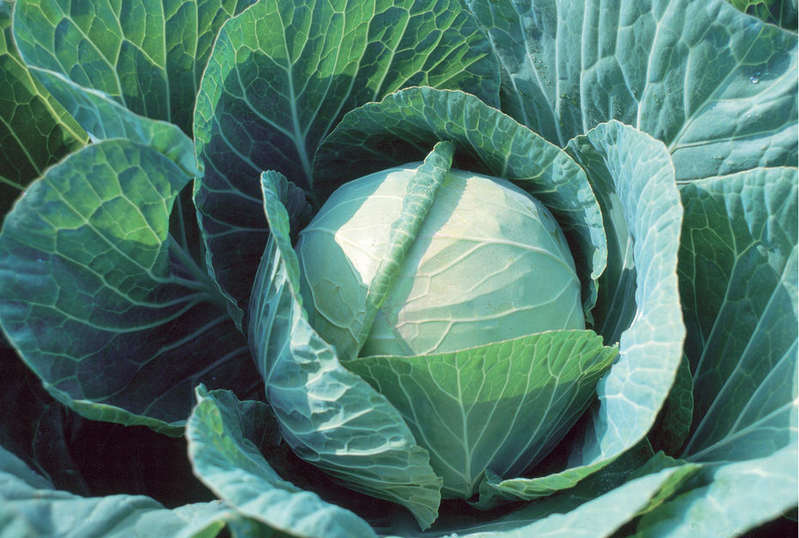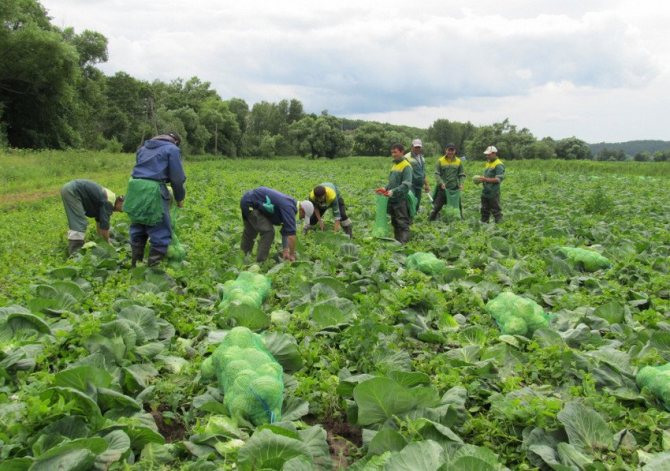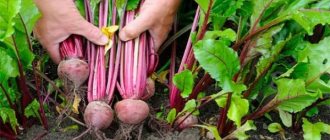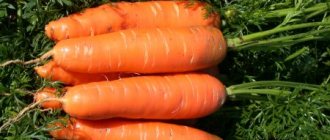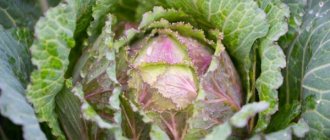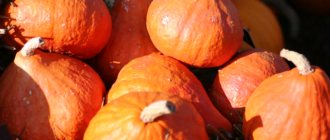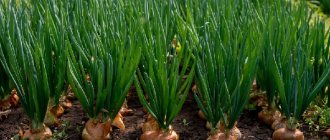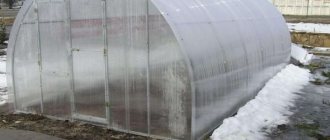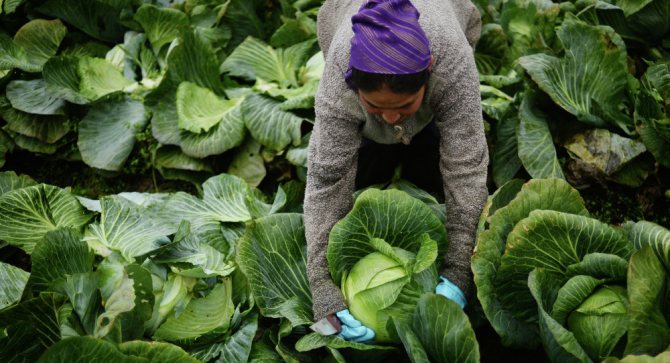
Cabbage is one of the favorite crops for gardeners. The climatic features of different regions of Russia make it possible to obtain a rich cabbage crop. A summer resident needs to know not only what activities need to be carried out for its full growth, but also how to choose the right time for harvesting heads of cabbage. Heads cut early can be unusable and not juicy enough. Late harvesting is fraught with cracking heads.
General rules for determining the timing of harvesting cabbage


Analyze a number of factors to determine when the cabbage is harvested:
- ripeness of the variety;
- climatic features of the region;
- weather;
- the condition of the vegetable;
- the size;
- the density of the head of cabbage.
For each purpose, the harvesting time for cabbage is different. For cooking and salting crops, the harvesting period is typical at the beginning - mid-autumn.
| View | Cleaning time |
| White-headed | July - 2nd half of October |
| Broccoli | 2nd half of August - 1st half of September |
| Brussels | 2nd half of September - 1st half of October |
| Redhead | 2nd half of August - mid-September |
| Kohlrabi | 2nd half of September - 1st half of October |
| Sheet | As it ripens, until frost |
| Beijing | Until mid-October |
| Savoy | Until mid-October |
| Color | Mid July - mid September |
When to remove cabbage from the garden according to the lunar calendar
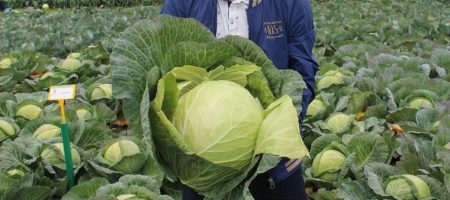

It has long been proven that all biological and physical processes are associated with the influence of the satellite of our planet - the Moon. During the coming month, growth, flowering and fruiting of all crops are more intensive. During the waning of the moon, all processes slow down. In this regard, it is advisable to plan cabbage harvesting during a decrease in the month. The vegetable will pick up juiciness before the full moon and will be ready for cutting.
You should study the lunar calendar a month before harvesting events. As soon as the full moon passes, you need to choose a dry sunny day and cut the heads. The culture harvested for the waning moon will be characterized by a higher juiciness and the presence of nutrients and vitamins.
It's time to harvest cabbage in the Moscow region and the Leningrad region
In the Moscow and Leningrad regions, summer can be either hot and dry or cool and rainy. The timing of harvesting cabbage for such regions depends on the speed of maturation of the heads of cabbage and weather conditions.
Early ripe varieties are cut in the second half of July with seedlings transplanted in mid-April. Late forks are harvested in late September - early October.
When cabbage is harvested in the Middle Lane
In the areas of the Middle Lane, warmth comes early. Already in late March - early April, you can sow cabbage seeds for seedlings. Landing in open ground is carried out in early May. The first heads of early varieties are cut at the end of June.
Late-ripening varieties are ready for harvesting in late August and early September. The middle strip is typical for hot summers and often dry weather, so cabbage in this region is not always rich in yields. Much more cabbage is harvested in cool summers. For sourdough, the vegetable is harvested in late October - early November. To do this, her disembarkation is done at the end of May - beginning of June.
Harvesting cabbage in the Urals and Siberia
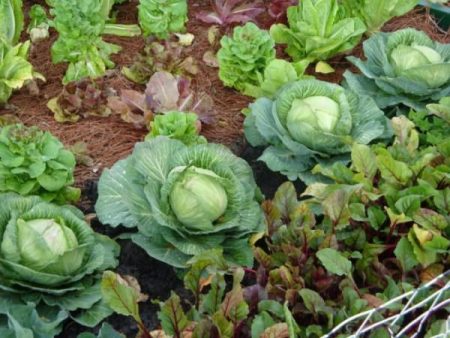

The climatic conditions of the Urals and Siberia make it possible to plant cabbage in May, but in greenhouses or indoors. Summer residents begin to sow seeds in late April and early May. Stable warmth in these regions begins from mid-May, and already at the end of July it is possible to cut off early-maturing varieties.
Late-ripening varieties are also planted in early May, and harvested in late September and early October.
Terms of harvesting cabbage in Belarus
The Belarusian summer is characterized by a high temperature regime and a short duration. For the region, varieties of medium ripeness are optimal, which are harvested in mid-October with the onset of frost. Early maturing varieties are harvested in mid-July.
What temperature can the cabbage withstand during storage? Cabbage: harvesting and the basics of proper storage
2792
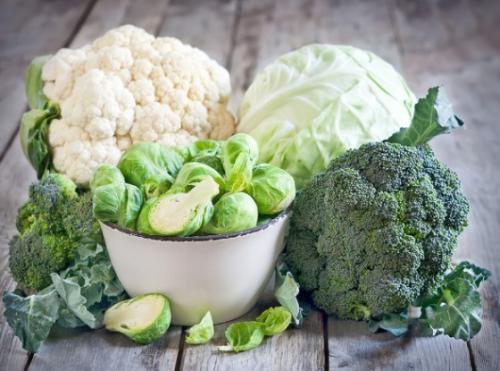

The culinary fashion for cabbage never passes. She is always on our menu. Therefore, when growing tight heads of cabbage, we make sure that they are stored longer. Skillfully select varieties (hybrids), feed, water on time, protect plants from pests.
About harvesting and proper storage of cabbage - read our material.
The first cold does not spoil cabbage
White cabbage
Heads of dead varieties of white cabbage can withstand autumn frosts of -6 ... -7 ° C.
After a short stay in the frost (below -8 ° C), the plants recover, but they lose their ability to keep fresh for a long time.
With repeated freezing, they become unusable, therefore, for winter storage, products should be removed before frost begins.
Chopped cabbages are less frost-resistant than standing. Repeated frosts are especially destructive for cabbage, it loses its ability to restore turgor, damaged leaves become licky.
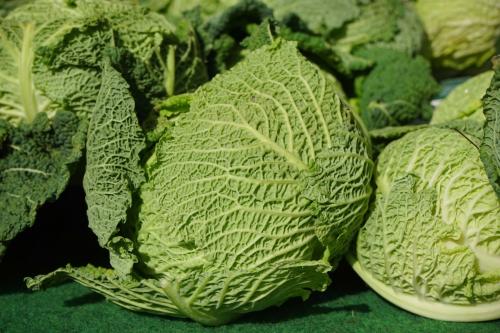

Prolonged exposure to negative (below -2 ° C) temperatures can lead to the formation of cuffs - heads of cabbage with a dark inner part, which subsequently decomposes. The outside of the head of cabbage remains intact.
This phenomenon is more often observed in varieties with very dense heads of cabbage. This is due to the fact that the inner part of the head of cabbage, especially the apical bud, is most sensitive to negative temperatures (it dies at a temperature of -0.8 ... -1.5 ° C).
Who is the most persistent?
- Savoy cabbage and red cabbage are more frost-resistant than white cabbage.
- Even higher frost resistance in leafy cabbage, in particular Brussels sprouts. It can withstand short-term frosts down to -10 ° C without damage. In the south and in warm winters, it successfully winters in the soil.
- But cauliflower reacts negatively to a decrease in temperature, its inflorescences are damaged by frost already at a temperature of -2 ° C.
To be in time before frost: when and how is it necessary to harvest cabbage of late varieties and types?
Mid-late and late-ripening varieties of white cabbage, red cabbage and Savoy cabbage must be harvested in October, in dry weather, before the onset of stable frosts.
Heads of cabbage are cut, leaving a small stump, or dug up by the roots. The outer leaves are removed, 2-3 cover leaves are left on the heads, which perform a protective function.
Cauliflower is harvested selectively, as it ripens. The head is cut off with a knife with a stump no more than 2 cm below the last leaf. Covering leaves are cut 2-3 cm above the head.
Our advice:
Harvesting broccoli cabbage begins when the head is tightly closed. Timely collection of young heads accelerates the formation of new shoots and inflorescences.
Brussels sprouts are harvested in one go. Cut off the stem, cutting off the leaves and apical bud. Plants are selected in which the heads of cabbage are normally developed throughout the stem. They can be broken off immediately or cut with a semicircular knife.
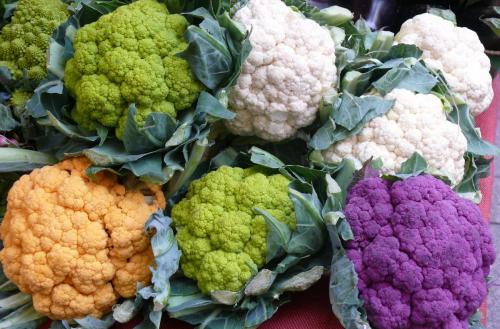

When harvesting, kohlrabi is pulled out by the root, then the roots and leaves of the rosette are cut off with a knife.
Heads of cabbage clean, but not white: preparation for storage
Before laying cabbage in a storage or cellar, heads of cabbage are cleaned of plant residues.
The cellar is being repaired, dried and aired. For disinfection, it is whitewashed with freshly slaked lime, adding copper sulfate to it (100 g per 10 liters of solution).
Heads of cabbage are cleaned before storage, leaving 2-3 cover sheets.
Our advice:
You can not peel the cabbage white - the upper leaves are more resistant to disease.
It is also undesirable to store cabbage with a rosette of leaves, since air exchange deteriorates and losses from diseases increase.
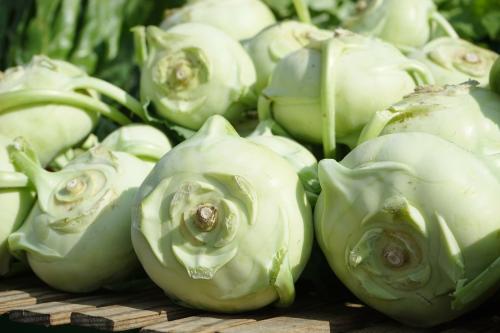

In order to reduce weight loss (natural weight loss) and reduce waste during stripping, it is very important to slow down the process of kidney differentiation when storing food products, that is, to prolong the state of dormancy for a longer time. This is possible provided that the temperature in the storage is reduced as much as possible.
The mildest varieties
The degree of preservation of cabbage depends on the variety. The latest varieties and hybrids of white cabbage of the Langendyikskaya winter variety - domestic varieties Knyaginya, Violanta and many foreign samples - remain for six to seven months.
They are characterized by a high content of chlorophyll, especially in the outer leaves, by very dense heads of cabbage, therefore they are slightly affected by gray mold in storage.
Late-ripening Amager varieties are also distinguished by high keeping quality: Snow White, Kharkovskaya winter, Ukrainian autumn, Yaroslavna, Lika, Lesya, Yana, Olga.
Domestic mid-late varieties of Josephine, Stolichnaya, Yelenovskaya, Tetyanka are preserved until spring.
When is it better to remove cabbage for pickling
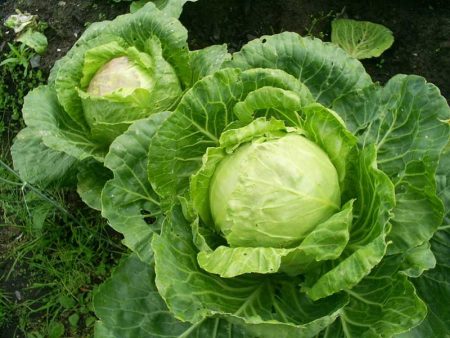

Various periods can be selected for the starter culture. You can pickle an early ripe variety and store it under special conditions. But the resulting canned product will not fully possess that spectrum of vitamins, antioxidants and nutrients, and will also have different taste qualities.
Late-ripening cabbage varieties are recognized as the best for salting. For them to ripen, it will take at least 150 days from the date of sowing the seeds. During this period, the culture gains in itself the maximum possible amount of nutrients, is poured with juice, sugar appears in its composition, bitterness disappears. The late-ripening vegetable is crispy and juicy. It ferments better and keeps well.
The benefits of sauerkraut
Surprisingly, sauerkraut is considered healthier than fresh sauerkraut. When fermented in a vegetable, the amount of vitamins increases, which are much better absorbed. So sauerkraut is an excellent source of vitamins. Even doctors note the remarkable beneficial properties of sauerkraut. It affects the functioning of the gastrointestinal tract, liver, improves immunity due to the high content of vitamin C and more. Sauerkraut contains a lot of folic acid and B vitamins, almost all minerals, which together helps to normalize metabolic processes and strengthen blood vessels. Cabbage removes cholesterol and, due to the presence of rare vitamin U, promotes effective regeneration of the gastric mucosa. In addition, sauerkraut is a natural cancer protector. It is possible to describe the beneficial properties of sauerkraut for a long time, among them:
- improvement of the digestive tract (vitamin U) and normalization of cholesterol levels,
- cabbage strengthens the nervous system (B vitamins),
- strengthening immunity (vitamin C) and prevention of diseases - a remedy for vitamin deficiency (antioxidants and vitamin and mineral composition),
- weight loss (tartronic acid) and normalization of metabolism (iodine, nicotinic acid),
- a decrease in blood sugar levels (few carbohydrates, a lot of fiber) - a serving of sauerkraut 100-120 grams per day reduces the risk of type 2 diabetes mellitus by 14% and inhibits mental decline for 11 years,
- antihistamine (vitamin U), bactericidal, anti-inflammatory, analgesic, etc.
The most important beneficial properties of sauerkraut are anti-cancer. Studies have shown that eating sauerkraut helps prevent cancer cells from dividing. The substances contained in sauerkraut have a particularly intense effect on malignant tumors of the intestines, mammary glands, and lungs. For example:
- Three servings of sauerkraut per week will reduce the risk of lung cancer by 33-72% and prostate cancer in men by 41%;
- Four servings of sauerkraut per week will be invaluable in reducing the risk of breast cancer by almost 50%;
- Five servings of sauerkraut per week has been shown to be beneficial in reducing the risk of bladder cancer by 51% and significantly reducing the risk of colon and rectal cancer, as well as peptic ulcer and associated stomach cancer.
All useful qualities of sauerkraut are preserved for ten months from the date of preparation. Love sauerkraut and cook it yourself!
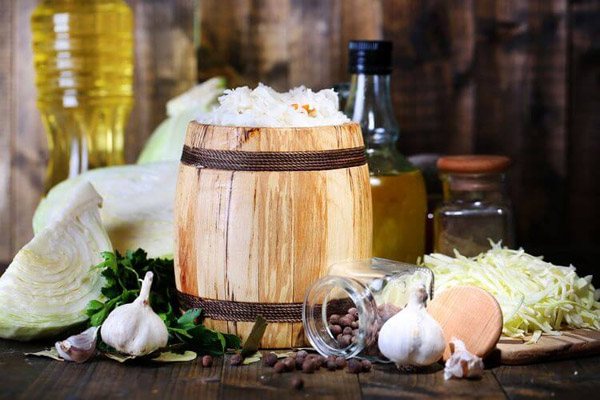

Influence of weather conditions on cabbage harvest
In Russia, cabbage is planted almost everywhere. Only the regions of the Far North are unsuitable for growing garden crops. Depending on the region, gardeners harvest cabbage. In the south, early ripening varieties are already ready for cutting at the end of July, while in the Middle Lane the head of cabbage is just tied up.
It is important! The optimal temperature range for full-fledged growth of cabbage is in the range of 15-20 ° C.
The timing of harvesting cabbage is also influenced by the weather, which lasted the entire season. The cool, rainy summers are conducive to the rapid growth of the culture. The abundance of moisture also contributes to the development of a powerful root system and the formation of juicy dense heads of cabbage. The heat, even with regular watering, negatively affects the yield.
When to harvest Megaton cabbage. Description of cabbage variety Megaton - planting and care, photos, reviews


All the happy owners of a plot of land try to plant homemade vegetables on it. Cabbage is such a valuable product that there is always a place for it in the beds.
However, caring for a vegetable for almost three months, you want to get the most out of it. It is especially important here which variety the gardener is planting. For example, Megaton cabbage will not fail, a description of the variety and photos, the features of planting and growing vegetables are offered in this article.
Description of the variety
Megaton cabbage heads are very beautiful. After ripening, they have a rounded, slightly flattened shape. Large, even leaves form a large dark green rosette with a bluish waxy bloom around a ripe head of cabbage. The middle of the head is white, dense.
Usually the weight of the plug is 5-7 kg. However, very often heads of cabbage weigh 12-15 kg. To grow such cabbage requires proper care and timely watering.
Experienced gardeners will understand from the blue leaves of the head of cabbage that this hybrid is not an early one (early cabbage has a leaf without a bluish bloom).
The Megaton hybrid is a mid-late variety. It takes 140-170 days from germination to technical maturity.
Cabbage variety Megaton is rich in sugary substances, so the cabbage is especially sweet, perfect for pickling, pickling. And for summer salads it is better not to use it, Megaton's leaves are too elastic, dense and rough for such a dish.
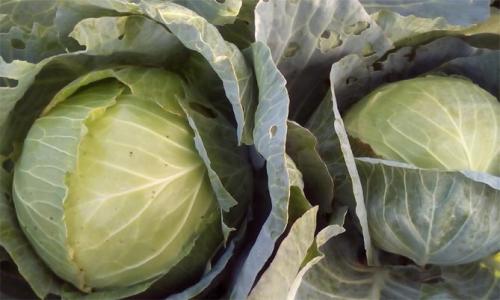

Characteristics of cabbage
The breeders set the task to develop a variety with the highest commercial qualities, which is not afraid of diseases and pests. As a result, the Megaton variety fell in love not only with amateur gardeners, but also large farms.
Megaton f1 cabbage is appreciated for the following qualities:
- high yield is one of the main characteristics of the variety, due to which Megaton is planted on a production scale;
- has a small stump, even if the head reaches 15 kg;
- almost 100% seed germination;
- excellent resistance to many diseases (keela, gray rot, fusarium wilting);
- resistant to cracking - many gardeners noticed that the variety retains whole heads of cabbage at a time when other varieties have already cracked (time of prolonged rains);
- wonderful taste - increased sugar content, crunchiness, juiciness, good for fermentation and stewing;
- excellent transportability - cabbage retains its wonderful appearance for a long time even after long transportation;
- not afraid of the cold.
In order to more fully reveal the qualities of the variety, it is worth mentioning the negative characteristics.
Disadvantages of the Megaton hybrid:
- white cabbage has a relatively short shelf life - no more than 3 months with the usual storage method;
- after the heads of Megaton are removed from the beds, they have harsh leaves.
Growing seedlings
In order to grow cabbage of this variety on the beds, you need to know some subtleties. The key to a great harvest is strong, strong seedlings, so experienced gardeners are engaged in growing seedlings on their own.
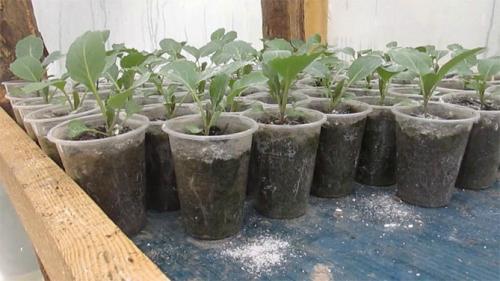

How to grow seedlings
In order not to be late and freeze the seeds, you should know when to sow cabbage for seedlings. It is better to plant seeds in the first third of March.
Landing scheme:
- pick up sufficiently deep boxes for seedlings, fill them with soil and plant the seeds in a groove 1.5 cm deep;
- it is optimal to keep the distance between rows 6-7 cm;
- the distance between the seeds is 5-6 cm, so there will be enough room for the green shoots to pick.
Then you should water and care for the seedlings, as for any other plants.
Important! The box with the planted seeds must be placed in a sunny place, this culture loves sunlight. In a shaded place, the seedlings will stretch, weaken.
When young cabbage gives 3-4 leaves, it can be dived (planted in more spacious boxes or separate pots).
Some ignore this stage, however, by transplanting young plants into a looser pot, the plant is given the opportunity to grow faster and get stronger. This shortens the maturation time of the cabbage in the garden.


Picking
This simple procedure includes the following steps:
- It is enough to pry the plant under the root with a fork, cut the root by a third (this is necessary for the root system to form faster and better), and plant the seedlings in a larger pot.
- Water the seedlings.
- Sprinkle ash on the ground to keep the cruciferous flea safe from the plant.
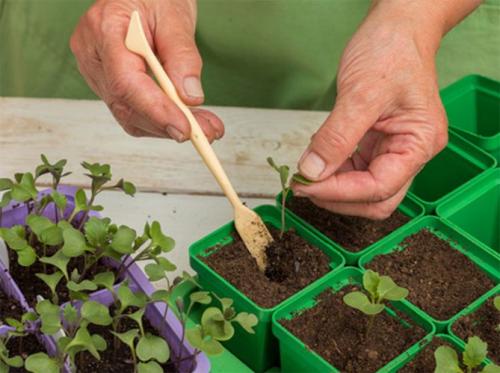

In April, if the seedling box was at home, it can be taken out to the greenhouse.
Landing in the ground
In order to plant young plants in the ground, it is necessary to determine a place for the future cabbage bed. The garden bed should be level so that water does not drain or stagnate, and be in a sunny place.
Terms of harvesting cabbage, depending on the ripening period
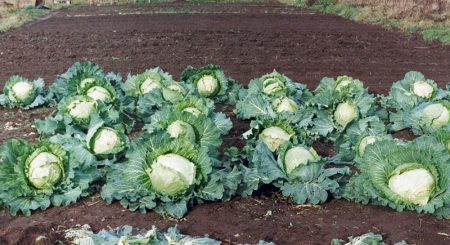

The timing of the cabbage harvest varies depending on the early maturity of the variety. To be able to start cooking fresh cabbage dishes as early as possible, you can choose early ripening varieties. Late ripening is better for salting.
Agronomists have bred dozens of varieties. According to the ripening period, groups are distinguished:
- super early. Specially bred varieties that are ready for consumption in less than three months. It is impossible to delay the harvesting of ripe heads of cabbage. They will crack. Cracks are dangerous for microbes to enter them, dry sheets or rotting of a head of cabbage;
- early. The crop is ready for use within 100 days after seed germination;
- mid-season. Harvesting times for mid-season varieties vary from 120 to 130 days after planting the seeds. Medium-ripening cabbage is suitable for long-term storage;
- late ripening. Cabbage can be cut after 150 days. It has the optimal ripeness and quality of cabbage heads for pickling and pickling. Early cutting of late-ripening varieties is undesirable, as this affects the shelf life of the fresh crop.
To estimate the harvest time for cabbage, add the number of days corresponding to a certain variety to the date of planting of seeds.
Original spicy home-style salting of early cabbage
Carrot-cabbage "tandem" is one of the most popular, because these vegetables perfectly complement each other. Spices give them a pleasant piquancy and extend the shelf life of the final product.
Ingredients
- Fresh cabbage heads - 3-4 kg;
- Carrots - 1 large root vegetable;
- Purified water - 2.5 l;
- Dried laurel - 2-3 leaves;
- Carnation - 2-3 inflorescences;
- Pepper - 4-5 peas;
- Dill (seeds) - 1 tbsp.;
- Acetic essence - 2 tablespoons;
- Sugar - about a glass;
- Salt to taste.
Cooking young cabbage quickly at home
- Shred the washed and dried cabbage, add grated carrots to it, salt, mix gently.
Attention! The recipe assumes the use of vinegar essence. It can be replaced with regular 9% vinegar (14-16 spoons). The amount of vinegar, salt and sugar will vary based on taste.
... To get the filling, put spices in the prepared water, pour sugar, boil. When the liquid cools down, you will need to add vinegar essence to it and pour the prepared vegetables with it. We wrinkle them slightly, not too zealous, and leave them there for 3-5 hours for salting.
- To get the filling, put spices in the prepared water, pour sugar, boil.
- When the liquid cools down, you will need to add vinegar essence to it and pour the prepared vegetables with it.
- We crumple them slightly, not too zealous, and leave them there for 3-5 hours for salting.
Then it remains only a couple of times to thoroughly mix the contents of the pickling container, put the pickling in clean cans, without sterilizing, close them tightly with plastic lids and send them for storage in a cold place.
The sample can be removed in two days.
How to determine if cabbage is ripe
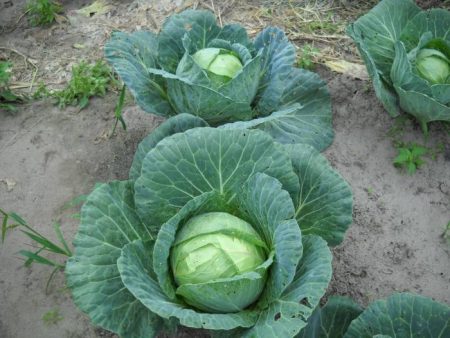

To determine if a cabbage is ripe, several factors need to be assessed:
- make a visual inspection of the head of cabbage. A yellow crown and yellow outer leaves indicate that the cabbage is ripe;
- feel the forks. A dense head of cabbage and a hard core signal ripeness;
- estimate the size. Medium forks or more means the vegetable can be cut;
- observe the culture. A noticeable growth process suggests that you still need to wait with the harvest. If the head of cabbage is no longer growing, the forks can be removed.
Important! Prevent the cabbage from freezing. It is best to harvest the crop immediately after stable overnight frosts. Forks lose their usefulness and taste. Heads of cabbage slightly touched by frost are suitable for long-term storage.
How to prepare your harvest?
Preparing cabbage for storage boils down to three stages:
- Choosing the best heads of cabbage... For long-term storage, only strong, dense heads are left. It is important to watch that the leaves are not eaten by butterflies or slugs, there are no cracks on the stump. Unripe cabbage heads, heads of cabbage with mechanical damage obtained during harvesting are not subject to storage.
- Cut off excess... Before sending the head of cabbage for storage, the upper leaves are plucked from it (no more than three protective leaves are left), the leg is cut off.
- We wash, dry... Heads of cabbage are washed from the ground with a stream of cool water, after which the cabbage is dried in the fresh air.
How to remove cabbage correctly
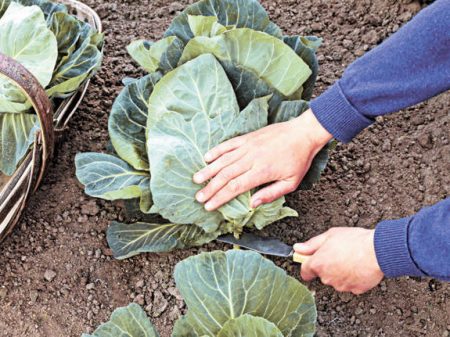

Before determining when to harvest cabbage, you should familiarize yourself with the weather forecasts and observe the weather. As a rule, in most regions, the time of the first frost and snowfall almost always occurs at the same time with a slight deviation.
Cabbage tolerates night coolness and temperature drop to + 5 ° C. Even a few frosts do not harm the culture, but only improve its taste.Natural chemical reactions in the head of cabbage increase the amount of sugar and decrease the concentration of the substances that cause bitterness.
Even at the end of September and the beginning of October in different regions, with possible night frosts, cabbage continues to grow and gain juice. If night temperatures stay below 6 ° C for more than three days without daytime heat, the condition of the vegetable must be analyzed. Frozen leaves do not thaw during the day? It's time to harvest.
You should pay attention to the size of the vegetable. Huge heads of cabbage that are not cut in time can crack and rot.
Helpful advice! Experienced summer residents with excessive growth of the head of cabbage limit its nutrition. To do this, they partially pull the forks out of the ground. Cabbage receives some nutrients, but this is enough to ripen the head of cabbage.
Before activities for cutting heads of cabbage, it is necessary to perform all the necessary procedures for caring for the crop - loosening, watering, feeding. Night frosts with a change to daytime positive temperatures are not an obstacle to the growth of cabbage.
Cleaning process


It is more advisable to carry out activities for cutting heads of cabbage on a dry sunny day. For the procedure, you should prepare garden tools, overalls, plank boards or boards, a storage room.
Harvest the cabbage as follows:
- forks are pulled out of the ground or dug out with a bayonet shovel;
- the root system is shaken off the ground;
- heads of cabbage are laid on boards located on the street. This is necessary so that excess soil disappears from the rhizomes. The crop should not be left in the open sun for a long time;
- the harvested crop is transferred to a cellar or other storage place;
- remove the outer leaves. This measure is necessary due to the fact that pests can hide under them;
- make stump pruning, if necessary. Depends on the storage method.
If the harvesting of cabbage has become urgent due to snowfall, the heads of cabbage should be placed under a canopy to dry. Small forks are not stored. They are only suitable for short cooking or salting.
How to remove from the garden correctly?
It is possible to preserve the integrity of the cabbage head, and at the same time ensure the longest possible storage period for the crop, subject to certain collection rules:
- Heads of cabbage are cut only in dry weather. Wet leaves very quickly begin to rot, therefore, if it rains during the harvesting process, before laying the cabbage for storage, it must be thoroughly dried outside under a canopy.
- Ten days before the start of the harvest, watering the cabbage beds is stopped.
- Heads of cabbage are cut with a hatchet or cut with a very sharp knife. You will need a sharp pitchfork to dig in the roots. It is important during the cutting process to ensure that the length of the stump remains at least 5 cm.
- If the soil in the garden is loose, the heads of cabbage are twisted together with the roots.
- When cutting out cabbage, be sure to leave three integumentary leaves. It is they who will protect the head from damage, damage by rot, fungi and mold.
- Insufficiently formed, rotten and other “defective” heads of cabbage are immediately sorted out and deposited. They are not suitable for long-term storage.
If the cabbage was grown on soil saturated with nitrogen-containing fertilizers, the crop is also not subject to long-term storage. It is immediately recycled.
Storage options


Various rooms are often used for storage - cellars, basements, verandas, sheds. Cabbage can be stored:
- in limbo. For this, the heads of cabbage are hung by the stump;
- on shelves or racks. Heads of cabbage raised above floor level are better stored, as the conditions for the circulation of moisture and air are more favorable. Before placing the cabbage on the shelf, the stump is cut with a sharp knife;
- wrapped in food grade plastic wrap.The upper leaves are removed, the forks are dried well for several days in a cool dry room, the stump is removed and wrapped in film. It is important that moisture does not get under the package and that it maintains its integrity;
- in cellars and basements. Prepare the cabbage before moving it to its intended location. It is necessary to clean, do processing and thoroughly dry the room. The temperature of the basement or cellar should have been low enough to preserve the heads of cabbage.
Important! Cabbage can be stored well and for a long time in cool rooms at temperatures ranging from -1oC to + 2oC.
Advice
It is important to adhere to the following recommendations:
- You can not leave cut heads of cabbage in the garden at sub-zero temperatures. The cabbage will freeze, after thawing, it will lose its taste and deteriorate very quickly.
- If during the harvesting period the air temperature drops below 0 ° C, the still uncut heads should be left in the garden. You can cut them when the air warms up and the forks thaws.
- Do not delay the cabbage harvest. At a temperature of -6 ° C, the heads of cabbage freeze, which leads to rapid deterioration of the product.
- So that the cut heads do not lose their juiciness during storage, a few protective leaves are left on them.
- When laying cabbage for storage in a basement or cellar, you need to make sure that there are no boxes with vegetables or fruits with a pungent smell in the neighborhood.
- Stocks should be checked periodically for rotten heads. Otherwise, one rotten vegetable can spoil almost the entire crop.
This article will tell you about the temperature at which fresh cabbage should be stored in winter.


